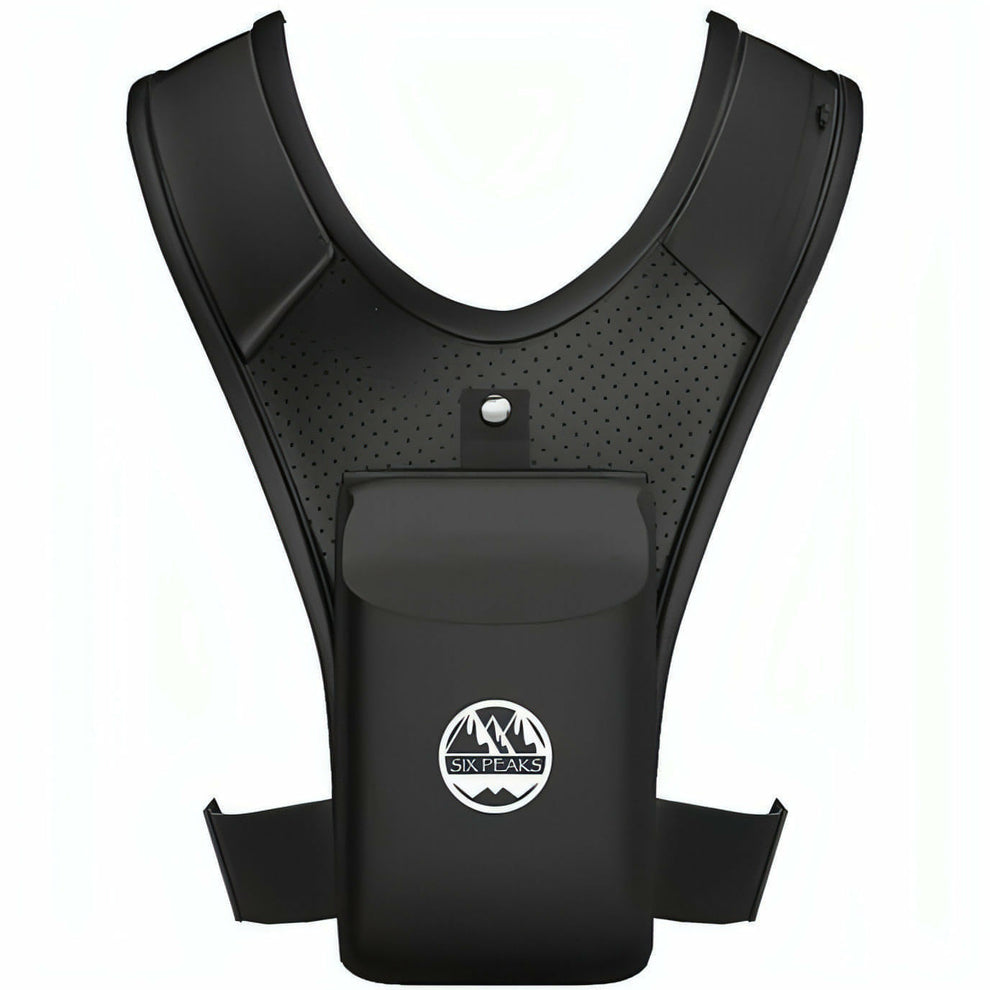The Great North Run is one of the UK’s most iconic running events. A half marathon of 13.1 miles, the event starts on Newcastle’s central motorway before runners cross over the Tyne Bridge and into Gateshead before making their way to the finish line on the South Shields coast.
The event attracts runners from all over the world, with 60,000 total participants taking part in the race each year, raising millions for charitable causes. Thanks to its unique and inclusive atmosphere, many beginner runners are inspired to take part. If you’re one of them or it’s your first time running a half marathon, keep reading as we provide you with a training plan and some running gear recommendations to help get you across the finish line.
A 12 week training plan for the Great North Run
The training plan below will help you to prepare for your half marathon across Tyne and Wear.
However, before we get into the weekly plan, there are some key things to note. The route will have some inclines, so at week 6 it is important that you start to incorporate hill training into your routine.
The easy runs mentioned should be a mix of light jogging, and walking if needed. You should run at a relaxed pace whereby you are able to hold a conversation. These runs will help to improve your overall endurance and performance output, and are essential for preventing injuries or strains caused by jumping into speed or long distance running.
Long runs will help you to improve distance covered without getting fatigued too quickly and should make up a good proportion of your distance covered in a week, but should be done at an easier pace. Especially at the beginning of your training if you are a beginner. Finally, interval runs are a way to improve both anaerobic and aerobic endurance, and should include a mix of walking, jogging, and running at pace.
For strength training, you can opt for body weight exercises, free weights, or use the machines at your local gym. If you aren’t sure how to use any of them, make sure to ask an instructor to show you so that you don’t cause injury or strain. If you feel that you might struggle to fit strength training into your schedule, undertake body weight and calisthenic training at home. This includes exercises like sit ups, lunges, and mountain climbers, but there are plenty of resources online with demonstrations to show you how to correctly perform these movements.
Week 1: 2x easy runs (2 miles or 30 minutes) and 1 long run of 5 miles at an easy pace. Have a rest day in between each run, and use these days to complete 20 minutes of strength training. This will leave you with one day of complete rest.
Week 2: Repeat week one but add one mile onto your weekly long run.
Week 3: 2x easy runs (3 miles) and 1 long run of 6 miles. Continue your strength training on rest days.
Week 4: 3x easy runs (3 miles) and 1 long run of 3 miles. 2x short strength training sessions on rest days.
Week 5: 3x easy runs (2 miles, 4 miles, 6 miles) and 1 long run (4 miles). 2x short strength training sessions on rest days.
Week 6: 4x easy runs (2 miles, 3 miles, 4 miles, 7 miles) and 1 hill training run (3 miles). 1-2 short strength training sessions.
Week 7: 2x easy runs with hill training (5 miles) and 1 long run (8 miles). 2x strength training sessions.
Week 8: 3x easy runs with hill training (4 miles, 10 miles) 1 interval run (4 miles). 2x strength training sessions.
Week 9: 2x easy runs (3 miles each) 2x long runs (9 miles each) and 2-3 strength training sessions.
Week 10: 2x easy runs with hill training (3 miles each) 1x interval run (4 miles) and 1x long run (10 miles) and 2 strength training sessions.
Week 11: 2x easy runs (2 miles each), 1x interval run with hill training (7 miles) and a long run (10 miles) with 2x strength training sessions.
Week 12: 1x easy run (3 miles), 1x interval run with mild hill training (5 miles) and the Great North Run.
Important things to remember when starting a training plan
The plan can be adapted to suit your needs, but it requires dedicated commitment. Make sure that you have the time to adequately train to avoid injury. Don’t be disheartened if you set out to complete the plan but feel that you need to walk more frequently or can’t complete the full distance of the long runs. As long as you push yourself to train regularly, you will start to see improvements.
Additionally, it is important that you don’t skip strength training. Short strength training sessions will help to strengthen your joints and muscles, reduce the risk of injury, increase speed and Vo2 Max. We suggest doing these sessions on your rest days to avoid tiring the muscles and overworking your body. However, it is important that you have one full rest day per week for recovery.
Nutrition and hydration are also not to be ignored, keeping on top of these things will help to ensure that you can perform at your best. If you feel that you may need some additional nutritional support whilst training, you might wish to utilise energy gels and electrolyte drinks.
What do I need when training for the Great North Run?
If you want to perform at your best, there are a few essential items that you’ll need during the course of your training and some additional pieces that will benefit you on race day. Aside from some cool and comfortable running clothing, you’ll need to consider investing in the following:
Training shoes
In the months leading up to the Great North Run, we would advise that you have a dedicated pair of training shoes that are separate from your race day shoes. This is to avoid general wear and tear to make sure that you remain fully supported on the day, allowing you to perform at your best. That said, you should have worn and trained in your shoes before race day to ensure they are broken in and don’t cause blisters or injury.For easy runs, we recommend the Brooks Ghost 16, which features soft cushioning for underfoot comfort, an engineered mesh upper which provides breathability, and a segmented crash pad for smooth transitions. These shoes will provide you with a comfortable fit with ample support, making them ideal for regular training runs.
 |
 |
| Brooks Ghost 16 Women’s Running Shoes | Brooks Ghost 16 Men’s Running Shoes |
If you’re running to improve your speed and you want to beat your personal bests, we’d opt for the Saucony Endorphin Speed 4 trainers. These can be used for daily easy runs as well as tempo and interval runs, making them perfect for more experienced runners. They feature Speedroll technology which amplifies forward motion and speed, alongside bounce-back Superfoam cushioning for improved energy efficiency.
 |
 |
| Saucony Endorphin Speed 4 Men’s Running Shoes | Saucony Endorphin Speed 4 Women’s Running Shoes |
Race day shoes
When it comes to running the half marathon, you’ll need a reliable pair of trainers to support you from start to finish. The Adidas Adizero Adios Pro 3 are an all-round suitable choice for the race. Designed to optimise efficiency, they feature Energyrods for a snappy stride, and Lightstrike Pro cushioning to improve underfoot comfort and help maintain energy over the course of the race. Additionally, the rubber outsole provides traction in both dry and wet conditions, so you’ll be prepared whatever the weather.
 |
 |
| Adidas Adizero Adios Pro 3 Women’s Running Shoes | Adidas Adizero Adios Pro 3 Men’s Running Shoes |
A GPS watch
A fitness watch can help to keep you motivated as well as help you track your progression more clearly. They can also be linked up to Strava, meaning that you can join one of our Start Fitness running groups, document your runs, and share your progress and achievements with friends, family, and running buddies.
The Garmin Forerunner 165 Music edition is a popular choice with those training for the Great North Run. With the ability to get health metric insights for things like sleep and recovery stats, and the ability to track the length and time of your run, you’ll be able to visually see your improvements and know when it is time to rest.
The music edition will let you store your favourite running tracks and connect with wireless headphones for phone-free running, ideal if you don’t want to take your phone with you during the race or when you are training. This particular watch can also enable safety alerts if you pair it with your phone, so if you get into any trouble it can send your location to a dedicated emergency contact.
 |
| Garmin Forerunner 165 Music HRM With GPS Watch |
A running belt or vest
Phone-free running isn’t for everyone, some people like to have their phone on hand during runs in case of emergencies or to listen to music. Additionally, you’ll likely have house keys to carry as well. Both of these things can be annoying and hinder your performance if they aren’t secured properly. You can mitigate this by opting for a running belt or vest which will allow you to secure your phone and any other small items so that they don’t move around in your pockets.
 |
 |
| Six Peaks Running Vest With Phone Holder | Salomon Pulse Running Belt |
Get prepared for the Great North Run with Start Fitness
The Great North Run is an incredible event, and crossing the finish line will feel so rewarding after all your hard work when training. To support you on this half marathon event, we’ve got a wide range of running clothes, accessories such as headwear and joint supports, as well as a myriad of high performance running shoes. So no matter your preferences or needs when running, we can help you to optimise your performance and complete the race.

























